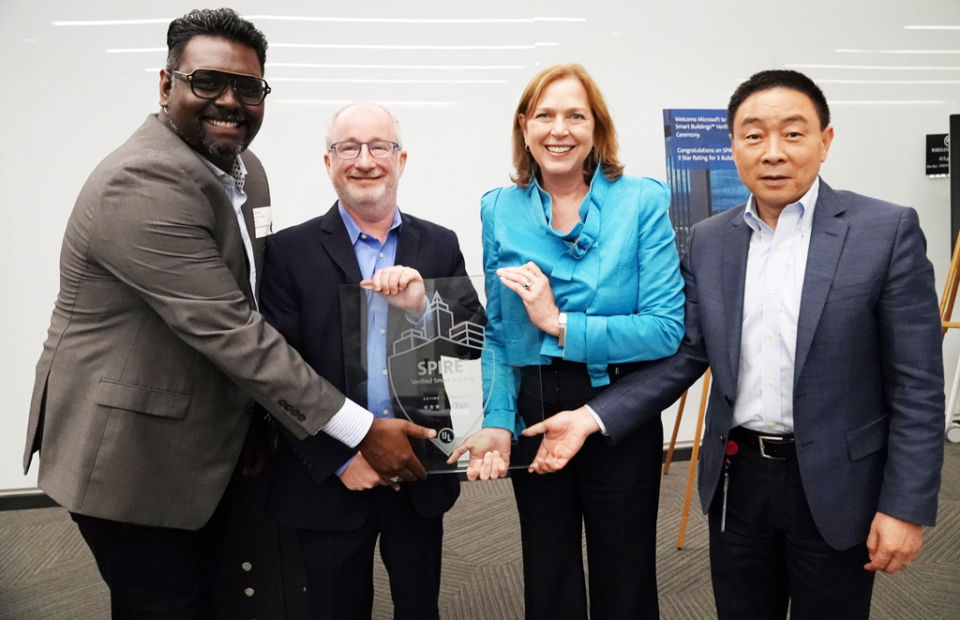Microsoft campuses receive smart building ratings
- July 25, 2022
- Steve Rogerson

Multiple buildings across Microsoft’s corporate campuses have received UL-verified Spire smart building ratings.
The buildings are in Redmond, Washington; San Jose, Costa Rica; Dublin, Ireland; and Hyderabad, India.
The rating for each building is based on the Spire smart building verified assessment, a comprehensive evaluation for smart buildings that results in an overall UL-verified rating.
Each Microsoft building received a three-star rating, the highest performing programme rating to date. In addition, the facilities in Dublin, Hyderabad and San Jose are the first buildings outside of the USA to achieve a Spire rating.
These ratings were based on multiple factors, including:
- Occupant engagement in building technology and experience innovation
- A continuous cycle of planned technology upgrades
- Physical security of critical networks and building assets
- Actions to meet sustainability commitments
- Flexible and robust reporting from connected building systems
- Building lifecycle and operational management
- Ongoing maintenance, support and awareness of IT network
- Enterprise cyber-security practices and policies
“By being the first ever to earn the UL-verified Spire smart building rating in multiple countries, Microsoft has taken a significant step in validating and demonstrating smart building innovation,” said Sudhi Sinha, vice president for Underwriters Laboratories (UL). “Buildings are complex ecosystems to manage, often with multiple priorities. By assessing, validating and rating key building elements that take into consideration the entirety of a smart building, the UL-verified Spire smart building rating supports Microsoft’s commitment to building performance and asset value. We thank them for putting their trust in UL to deliver on that promise.”
Each facility received an in-depth, on-site and virtual audit of the building’s technologies and processes. UL focuses on six key, industry-driven building criteria categories that define the full scope of smart building performance. These are power and energy, health and well-being, life and property safety, connectivity, cyber security, and sustainability.
The rating comes at a time when businesses are considering smart building needs in the face of new and evolving influences. These include the decarbonisation of physical assets, alignment of business and building missions, experiences and productivity of occupants, concerns over cyber security, and the introduction of artificial intelligence, image perception and robotics into the built environment.
In addition to these issues, recent health concerns have brought new priorities to building operators looking for smart building systems to help keep occupants safe. Spire assessments provide insight into smart building performance and help communicate a commitment to the health and well-being of its occupants.
Originally conceived as part of an overall initiative between the Telecommunications Industry Association (TIA) and UL to share commercial, technical and standardisation insights to further their work in the ecosystem of smart buildings, the smart building programme includes assessment criteria input from a TIA industry working group of more than 60 commercial real estate, real estate investment trust, asset management, technology and telecommunications industry leaders.





